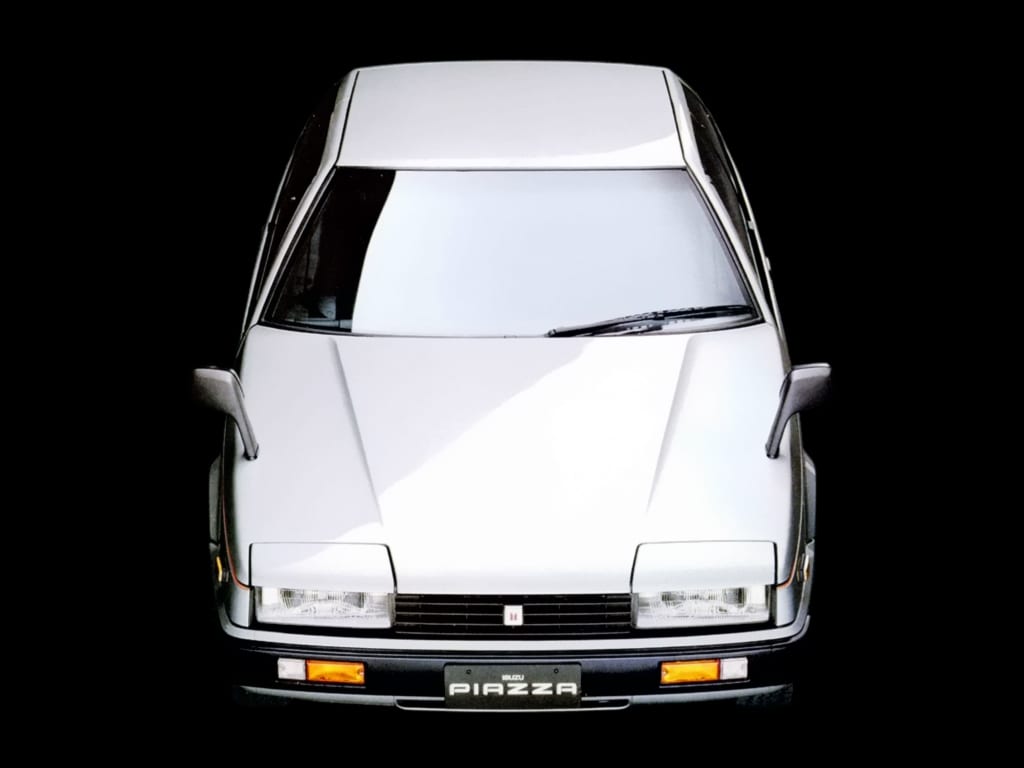The other day we sat in traffic behind a classically brown, beat up Isuzu pickup truck from the ‘80s, with I S U Z U boldly embossed on the tailgate. “Isuzu”, asked my girlfriend, “Didn’t know that was a brand.” I cannot really blame her for not being aware of Isuzus, as the manufacturer has only really ever offered trucks here in the last decades. And they’re trucks for people who just want a pick-up truck with no extra cost for the brand part. (That would get you the Mercedes-Benz X-Class instead.)
I didn’t get into explaining the Isuzu history more than saying there used to be saloons and coupes and that trucks are really the only thing left, but perhaps I should have. The Isuzu Piazza, for example, is such a good-looking car that it deserves to be mentioned every time Isuzus enter the picture.



The Piazza, or Impulse as it was called in some markets, was a production version of the Giugiaro Asso di Fiori concept seen above, itself named after the ace of clubs. It’s the perfect car for every one of those people who look at a Scirocco (birthed from the same concept car card deck) and lament the fact it’s front wheel drive, as if ‘80s Volkswagen suddenly would have decided to start making rear-drive cars again.
The RWD-ness of the Piazza is also behind one of its demerits, as it is based on some very humble mechanicals. Front wheel drive was where the advanced engineering zeitgeist went in the early ‘80s, and save for a number of prominently driver-oriented marques, this is what you’d get for your money in an economy car based rear-drive coupe: a live rear axle and other dated solutions. You can also shop for the Volvo 300-series if all you want is a RWD car instead of the FWD finesse available in the segment. There’s probably a good reason why the Piazza’s competitor, the 480ES begun the era of FWD Volvos.

In a similar vein, the Piazza’s powertrain also brings to mind the harshness of the Ford Sierra I used to own. That car had (and still has) the CVH boat anchor engine, which didn’t like to rev and didn’t have any torque. The Piazza’s two-liter turbo unit is far brisker, but reviews of the time said it was “tractor-like” and sounded like it was “in pain” when revved. Those are CVH hallmarks right there.

I’ve never driven a Piazza or Impulse, as there are only a couple of examples around here and none were ever officially imported. The easiest way that would be rectified by buying this British example currently for sale on Gumtree for just £2,800 – that’s around 3,500 dollars – and bringing it home. Of course it’s RHD, and it’s probably survived with low miles thanks to being automatic. Still, the transmission is a 4-speed unit instead of three speeds like some of the units of the ear, and if the gods of late-night eBay browsing would grant one with components for a manual swap, that would probably be alright.



But an auto is fine for cruising, especially since you’d need to pay less attention to mastering shifting with your left hand. And the car in the ad is a later model partially re-engineered by Lotus, who apparently fixed a lot of the car’s initial handling flaws, like FWD-esque understeer. U.S. cars also had sealed beams instead of the aero bricks on this car, so a lighting swap to Continental-spec traffic would not be impossible to do. While the headlight quality would probably suffer, it would make the front end even more DeLorean-like than it already is.

The design of the Piazza, inside out, is why it is a car worth remembering. Never mind the less than stellar drivetrain, the wedge shape and the cabin are the Piazza’s claims to fame. Paired with the right wheels it can look like the production specification concept car it deserves to be.
[Images: Isuzu, Carstyling, Gumtree]


Leave a Reply